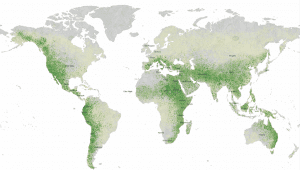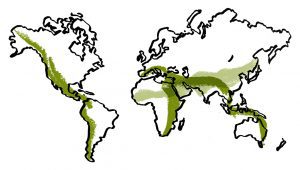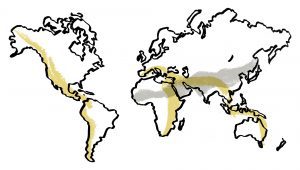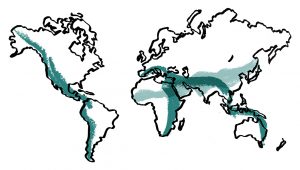Images
Project
Stefano Boeri Architetti
Year
2019 - ongoing
Typology
Territorial Strategy, Landscape planning, Urban Forestry, Urban Landscape, Landscape enhancement
Services
Concept, Strategic definition design
Program
Public space
Stefano Boeri Architetti
Founding Partner: Stefano Boeri
Project Leader: Livia Shamir
Research Team: Simone Marchetti, Sofia Paoli, Luis Pimentel
Consultants / Partners
FAO Food and Agriculture Organization (Lead), Royal Botanical Gardens Kew, The Arbor Day Foundation, C40, UN-Habitat, Cities4Forests, The Italian Society of Silviculture and Forest Ecology (SISEF), Urban Forest Research Center China
In 2007, the African Union launched the Great Green Wall project to restore degraded landscapes and transform the lives of millions of people in the Sahel, one of the world’s poorest regions. The project, spanning over 8.000 km, crosses 20 countries and aims to restore 100 million hectares of degraded land, absorb 250 million tonnes of carbon dioxide and create 10 million jobs by 2030.
From this inspiring and powerful idea, and with the same transnational and multi-sectoral approach, came the Great Green Wall of Cities project, later Green Urban Oases, presented in New York at the Climate Action Summit 2019.
Coordinated by the Food and Agricultural Organisation (FAO), the project involved several working groups, organisations and professionals, including Stefano Boeri Architetti, the Royal Kew Botanical Gardens, the Arbor Day Foundation, C40, UN-Habitat, Cities4Forests, the Italian Society of Silviculture and Forest Ecology and the Urban Forestry Research Centre in China.
While the Great Green Wall focuses mainly on rural areas, the vision for Green Urban Oases is developed from urban contexts with a focus on cities in arid areas, among the most vulnerable to the environmental crisis. Among the countries involved in the preliminary list, in Asia and North-East Africa: Cabo Verde, Namibia, South Sudan, Afghanistan, Mongolia, Chad, Jordan and Tunisia.
In particular, the project aims to increase the resilience of cities to climate change: through urban forestation strategies and active community engagement practices, Green Urban Oases ensures ecological continuity within and between cities in order to increase their capacity to respond to the effects of the environmental crisis and, consequently, make the inhabitants’ food and economic livelihoods more resilient.
While urban forestation and nature-based solutions are not the only solution to the environmental crisis, at the regional and urban scale they certainly contribute to developing a response and adaptation to climate change, mitigating the microclimate, protecting soils and preserving river basins, as well as providing city dwellers and local communities with important ecosystem services. With this perspective, the project aims to create a series of ‘green oases’, integrating these points of discontinuity into the broader mosaic of landscape restoration interventions in semi-arid regions of the world, increasing the resilience of cities to external shocks and improving the health and well-being of city residents.
The project refers to the study published in Global Change Biology (Di Sacco A., Hardwick KA, Blakesley D., et al., 2021) that provides guidelines and rules to ensure the effectiveness of forestation projects (afforestation and reforestation), to define priorities and key elements for future development. In particular, one of the indications in the research document, already among the activities envisaged by Green Urban Oases, is to work closely with stakeholders and local people to develop participatory city-region forestry strategies. At the implementation level, therefore, the Green Urban Oases programme envisages the active involvement and participation of local communities in the entire planning, design and management process, as has already been done by the Great Green Wall project in Africa. In this way, the solutions identified in the different cities can respond in the most coherent and punctual way possible to the most urgent needs of the local populations and to the climatic and agro-ecological conditions of the site, using different interventions at different scales, such as the creation of urban forests, parks, urban food forests, urban farms.
In general, Green Urban Oases represents the largest scale of application of urban forestation strategies and nature-based solutions, which sees global ecological corridors as an integrated and powerful response to current social and environmental complexities. The idea of working starting from the cities, to generate and activate a transformative process of the entire territory, including natural and semi-anthropised areas, can really contribute to combating the effects and causes of the climate crisis, while triggering new economic levers, supporting the potential sustainable growth of local populations.




